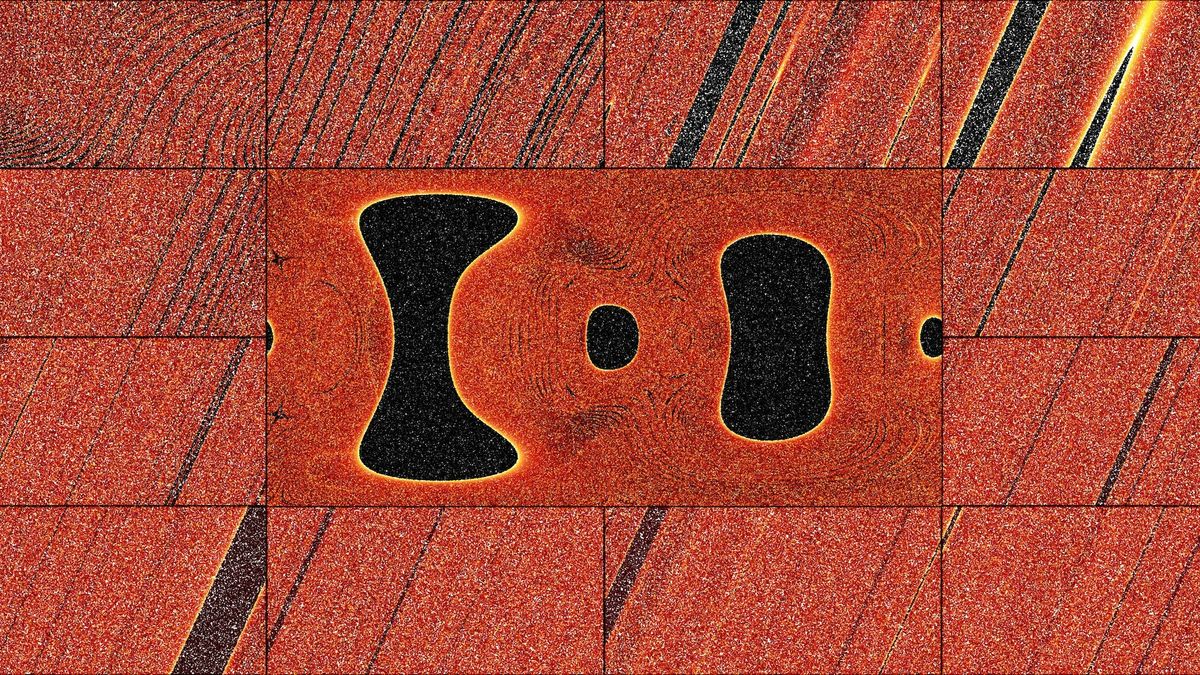The famously chaotic three-body problem, which describes how three masses gravitationally interact, has puzzled physicists for centuries. Now, new research suggests it’s not quite as chaotic as scientists thought — and that finding could make the problem more puzzling than ever.
When solutions to the three-body problem are mapped out based on where the three objects start in relation to one another, islands of stability emerge from the chaos, researchers reported in the September issue of the journal Astronomy & Astrophysics. These islands could help scientists detect colliding black holes, the researchers said.
The gravitational interactions between two bodies can be reliably described and mapped using equations. But when you add in a third object, things get wild — the motions of the bodies are unpredictable and often end with one of the bodies being flung out of the system. Even small changes in their starting masses, velocities or positions often lead to drastically different outcomes.
Broadly speaking, researchers use statistics to predict how often any one of the three bodies will be ejected from the system. But when Alessandro Trani, a theoretical physicist at the Niels Bohr Institute in Denmark, and his colleagues ran computer simulations of the three-body problem, their results didn’t match the statistical predictions.
Their experiments began with a binary — two objects orbiting each other — and a single object approaching from elsewhere in space. Across more than a million simulations, the team altered the positions of the two bodies in the binary and the angle at which the single object approached. Then, they let the three bodies interact until one was eventually kicked out of the system.
Related: Mathematicians find 12,000 new solutions to ‘unsolvable’ 3-body problem
In a purely chaotic system, even a small adjustment to the positions or angles of the three bodies could change which of the three objects got ejected. But Trani and his colleagues found several ranges of positions and angles where the same object got kicked out every time. These “isles of regularity” represent gaps in the chaos of the three-body problem.
These non-chaotic zones could complicate how researchers predict three-body interactions in space. The predictions scientists usually apply to these astrophysical interactions rely on statistics, Trani said. But the purely statistical calculations don’t work on problems that include regions of both chaos and regularity.
“We need to have a mix of statistical predictions for the chaotic space and a mix of regular mechanical theory or deterministic theory for the regular one, and we also need to know how to mix the outcomes,” Trani told Live Science. “That’s the most difficult part: identifying where the three-body problem is chaotic and where it’s not, without running simulations.”
Finding these regions of stability could also help scientists spot and understand gravitational waves, which are released when black holes interact or merge. Interactions among three black holes, which are relatively common inside star clusters, can send two of them careening toward each other. But predictions of these events capture only those resulting from chaotic interactions. There could be more non-chaotic interactions happening among three black holes and, therefore, more opportunities to study gravitational waves, Trani said.


